- MegaRide
- VESevo
- Flavio Farroni
- Aleksandr Sakhnevych
- Andrea Genovese
- weaRIDE
- tyre simulation
- motorsport
- RIDEsuite
Megaride: From Academic Lab To Global Tyre Technology Innovator
- By TT News
- April 16, 2025
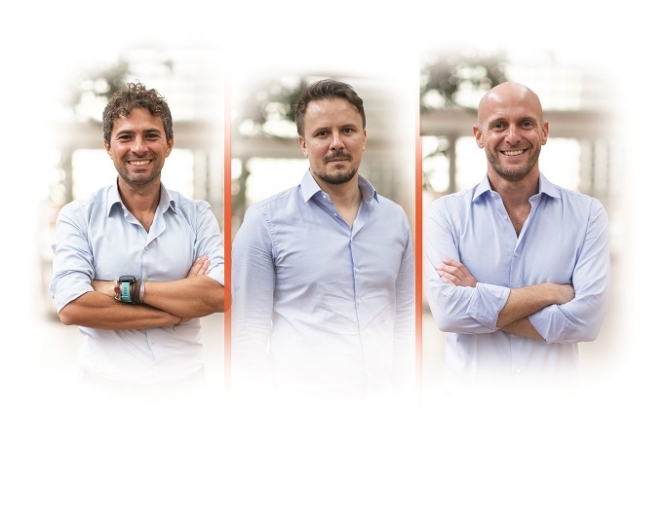
Led by CEO Flavio Farroni, the company has expanded into what he describes as a ‘MegaRide holding’, comprising multiple specialised businesses, each targeting different segments of the automotive technology sector.
“We embrace an unconventional approach to startup building: we invest in organic and gradual growth, which keeps us independent from private funding and allows us to reinvest our revenues into the team and R&D projects fully,” says Farroni, who co-founded the company after conducting tyre research at the university.
FROM ACADEMIA TO INDUSTRY DISRUPTOR
MegaRide’s journey represents a new technology transfer model from academia to industry. Farroni acknowledges that this transition wasn’t without challenges.
“The main leadership challenges we faced along our journey were, first and foremost, gaining acceptance for our role as researcher-entrepreneurs – researchpreneurs – both within academia and in the market. In the beginning, neither was sufficiently advanced to recognise such a new and competitive figure,” Farroni explains.
This ‘researchpreneur’ model has since become central to MegaRide’s competitive advantage. The company maintains close ties with universities and ensures a continuous pipeline of cutting-edge research that feeds into commercial applications.
“Our deep synergy with universities makes research and innovation our core mission. This allows us to explore methodologies and techniques that may not immediately apply to current products but lay the groundwork for future advancements,” explains Aleksandr Sakhnevych, MegaRide’s Chief Technology Officer.
ITALIAN TECH FIRM REVOLUTIONISES TYRE SCIENCE WITH PHYSICS-BASED SIMULATION
In a nondescript business park on the outskirts of Naples, a team of researchers-turned-entrepreneurs is quietly revolutionising how the world’s leading vehicle manufacturers and motorsport teams understand tyre performance. MegaRide, founded by academic researchers from the University of Naples Federico II, has grown from a university spinoff to one of the most innovative players in automotive simulation technology.
The company specialises in physics-based modelling software that predicts tyre behaviour with unprecedented accuracy – crucial information for both racing teams seeking competitive advantages measured in milliseconds and vehicle manufacturers designing safer, more efficient cars for everyday drivers.
THE TECHNOLOGY: DIGITAL TWINS FOR TYRES
These physics-based models simulate how tyres behave under different conditions, predicting temperature changes, grip levels and wear patterns in real time with an accuracy that was previously impossible.

One of its most innovative products, weaRIDE, enables real-time tyre tread wear and chemical degradation simulation. This technology is particularly significant for electric vehicles, whose instant torque delivery creates new challenges for tyre durability.
“We were the first to develop a commercial thermal model for tyres, the first to create a multiphysics Pacejka-based model, and today, we are the first to introduce a wear and degradation model, weaRIDE, internationally awarded for its innovation. We try to be always a step ahead, and scientific research is our ‘secret weapon’,” Farroni says.
Sakhnevych explains that ensuring model accuracy across varied real-world conditions requires a multifaceted approach: “MegaRide ensures the accuracy and reliability of the weaRIDE model through a multifaceted approach. First, there is a continuous effort to enhance the physical fidelity of the model, leveraging a strategic synergy with universities and research institutions.”
He adds, “Additionally, a key focus is placed on improving data processing methodologies. Tyre models often face scrutiny due to the limitations in predictive accuracy, which are strongly influenced by the quality of the calibration data.”
FROM SIMULATION TO MEASUREMENT: THE VESEVO SPINOFF
In 2018, MegaRide expanded its footprint by spinning off VESevo, a company focused on developing innovative testing equipment for tyre materials. VESevo’s flagship product enables non-destructive testing of tyre compounds, providing detailed mechanical property data previously unavailable without destroying the tyre.
Andrea Genovese, CEO of VESevo, explains how the technology has evolved from its motorsport origins: “VESevo is evolving its motorsport-derived technology to enhance industrial applications, leveraging its versatility for real-time quality control in tyre manufacturing. Its non-destructive, non-invasive and rapid-testing capabilities allow each tyre to be analysed directly on the production line.”
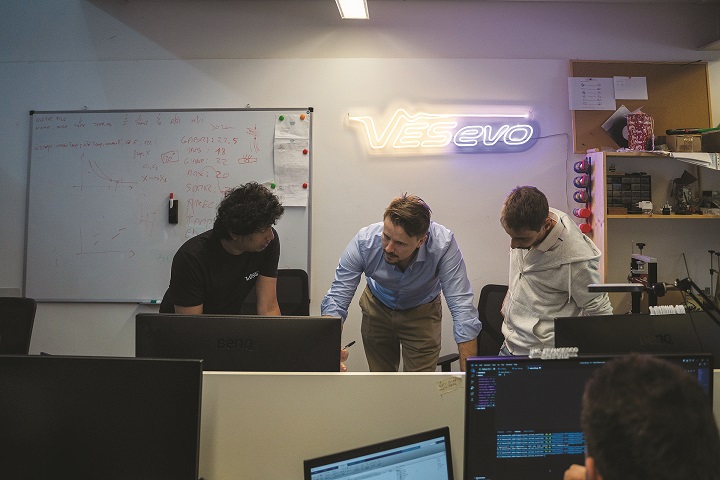
This represents a significant shift in quality control for tyre manufacturers. “This innovation enables mechanical property testing to be performed not just on a sample basis but on the entire production, guaranteeing comprehensive quality assessment,” Genovese adds.
However, VESevo has faced regulatory headwinds in motorsport, particularly after the Fédération Internationale de l’Automobile (FIA) introduced rules limiting the use of its technology in Formula 2 and Formula 3.
“Honestly, we were surprised by this regulatory change, as motorsport has always been a driving force in introducing innovations, especially when they enhance performance, spectacle and safety, benefiting all stakeholders involved,” Genovese admits.
Rather than seeing this as a setback, VESevo has focused more on industrial applications. “By broadening our reach into new applications, we are not just navigating these changes, but we are turning them into opportunities to drive innovation forward,” Genovese says.
STRATEGIC ACQUISITIONS AND GROWTH
MegaRide has augmented its technological capabilities through strategic acquisitions, including the 2022 purchase of Wriggle Solutions’ intellectual property. This acquisition bolstered MegaRide’s capabilities in real-time tyre wear monitoring.
“The acquisition of Wriggle Solutions’ intellectual property in 2022 has expanded MegaRide’s strategic line, accelerating the transition from purely simulation-based technologies to real-time, onboard vehicle sensing,” Sakhnevych explains.
This move has enabled MegaRide to develop virtual sensors that can estimate previously unmeasurable parameters like vehicle sideslip angle, tyre temperature and tread wear. These capabilities have applications for vehicle performance, safety systems and autonomous driving technologies.
MegaRide has also established key partnerships with major industry players. Its collaboration with Prometeon, an industrial tyre manufacturer, illustrates how the company’s technology is being applied beyond high-performance vehicles to commercial transport.
THE CHALLENGE OF SCALING HIGH-PERFORMANCE TECHNOLOGY
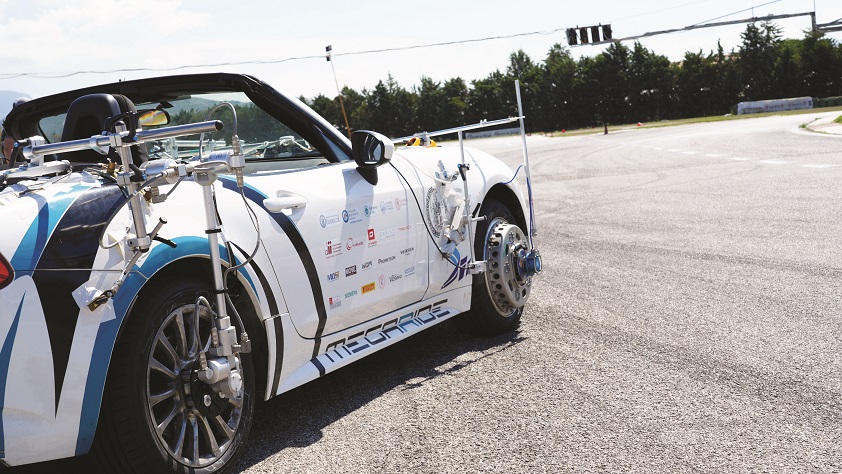
Transferring technologies developed for the extreme demands of motorsport to mass-market applications presents significant challenges. Sakhnevych outlines several hurdles: “One of the main challenges is cost, as motorsport applications rely on high-end sensors and powerful computing. To make these solutions viable for mass production, MegaRide focuses on leveraging existing vehicle sensors and optimising software to run efficiently on standard ECUs.”
He continues, “Scalability is another hurdle, as consumer vehicles operate in diverse and unpredictable conditions. Ensuring robust performance across various road surfaces and driving styles requires extensive validation and adaptive modelling.”
THE AI QUESTION
As artificial intelligence (AI) transforms industries worldwide, MegaRide maintains a measured approach to incorporating machine learning (ML) into its products. The company’s roots in physics-based modelling inform its perspective on AI’s role in tyre simulation.
“MegaRide leverages artificial intelligence and machine learning while staying true to its roots in physics-based modelling,” Sakhnevych says. “Our background in academic research, particularly in mechanical engineering, has shaped our expertise in model-based approaches."
He distinguishes their approach from purely data-driven methods: “Unlike purely data-driven methods, our approach enables prediction without extensive training datasets – simply by parametrising models using well-established physical principles.”

DATA SECURITY CONCERNS
As vehicles become increasingly connected, handling sensitive data securely becomes increasingly important. MegaRide has developed comprehensive approaches to data security, particularly relevant to its onboard sensing technologies.
“MegaRide addresses data privacy and security concerns in tyre technology through a robust combination of encryption, secure data management protocols and role-based access controls,” Sakhnevych explains.
COMPETITION FROM INDUSTRY GIANTS
As a small company operating in an industry dominated by global corporations, MegaRide faces significant competitive pressures. However, Sakhnevych sees advantages in the company’s nimble structure.
THE FUTURE: EXPANSION AND DIVERSIFICATION
Looking ahead, MegaRide plans to continue expanding through organic growth and the development of new ventures within its holding structure.
“The ‘MegaRide holding’ concept will allow us to diversify our strategies, expanding into various sectors we consider strategic,” Farroni explains.
“MegaRide’s models are increasingly used by OEMs, tyre manufacturers and racing teams, and the technological landscape is moving towards a greater adoption of physics-based models like ours, driven by the growing use of real-time simulations.”
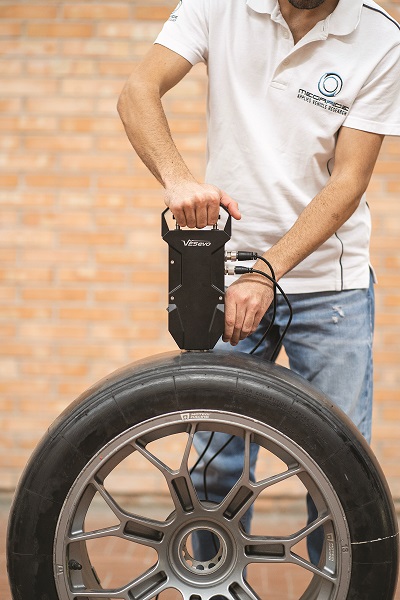 Each company within the holding structure has its strategic direction. “VESevo, originally founded to produce a portable device for motorsport, is now evolving – thanks to key strategic partnerships – into a provider of non-destructive testing solutions and quality control systems for tyres, directly integrated into production lines,” says Farroni. The newest addition, RIDEsense, targets emerging opportunities in vehicle automation. “The increasing onboard computational power of vehicles has led to the creation of a new company, RIDEsense, focused on developing ‘Virtual Sensors’ – real-time algorithms capable of estimating otherwise unmeasurable quantities and providing critical insights for ADAS and autonomous driving systems, which will be pivotal in tackling the mobility challenges of the coming years,” explains Farroni. VESevo’s Genovese describes a similar approach to balancing immediate market needs with long-term innovation: “At VESevo, balancing short-term business goals with long-term research and development is part of our DNA. As an academic spinoff from the University of Naples Federico II and an innovative company, we follow the same path that MegaRide successfully pioneered, transforming cutting-edge research into commercially viable solutions while maintaining a strong focus on technological advancement.”
Each company within the holding structure has its strategic direction. “VESevo, originally founded to produce a portable device for motorsport, is now evolving – thanks to key strategic partnerships – into a provider of non-destructive testing solutions and quality control systems for tyres, directly integrated into production lines,” says Farroni. The newest addition, RIDEsense, targets emerging opportunities in vehicle automation. “The increasing onboard computational power of vehicles has led to the creation of a new company, RIDEsense, focused on developing ‘Virtual Sensors’ – real-time algorithms capable of estimating otherwise unmeasurable quantities and providing critical insights for ADAS and autonomous driving systems, which will be pivotal in tackling the mobility challenges of the coming years,” explains Farroni. VESevo’s Genovese describes a similar approach to balancing immediate market needs with long-term innovation: “At VESevo, balancing short-term business goals with long-term research and development is part of our DNA. As an academic spinoff from the University of Naples Federico II and an innovative company, we follow the same path that MegaRide successfully pioneered, transforming cutting-edge research into commercially viable solutions while maintaining a strong focus on technological advancement.”
He elaborates on their dual-track strategy: “In the short term, we focus on delivering market-ready solutions that meet the immediate needs of our customers, particularly in motorsport and industrial applications. By working closely with teams and manufacturers, we ensure our technology provides tangible value and rapid returns, allowing us to sustain growth and reinvest in innovation.”
Meanwhile, the academic connection remains vital: “Our strong ties to the academic world allow us to act as a ‘bridge’ between research and industry. This close connection enables a constant exchange of knowledge, technology, expertise and skills, accelerating innovation while ensuring our developments translate into real-world impact,” says Genovese.
A MODEL FOR RESEARCH COMMERCIALISATION
MegaRide’s success offers a blueprint for commercialising academic research in highly technical fields. The company has carved out a unique position in the automotive technology ecosystem by maintaining close ties to academia while developing practical market applications.
The company’s ‘researchpreneur’ model provides a case study in technology transfer that may be increasingly relevant as universities worldwide seek to translate research into commercial impact. MegaRide demonstrates that deep technical expertise can be successfully paired with entrepreneurial vision when the right structures and leadership are in place.
As vehicle electrification, automation and connectivity create new challenges for tyre performance and safety, MegaRide’s physics-based approach to simulation and testing positions the company to play an increasingly important role in the future of mobility.
What began as academic research in a Naples university laboratory has evolved into a group of companies pushing the boundaries of what’s possible in understanding the complex interactions between tyres and roads – knowledge that underpins both the thrilling spectacle of motorsport and the mundane safety of everyday driving.
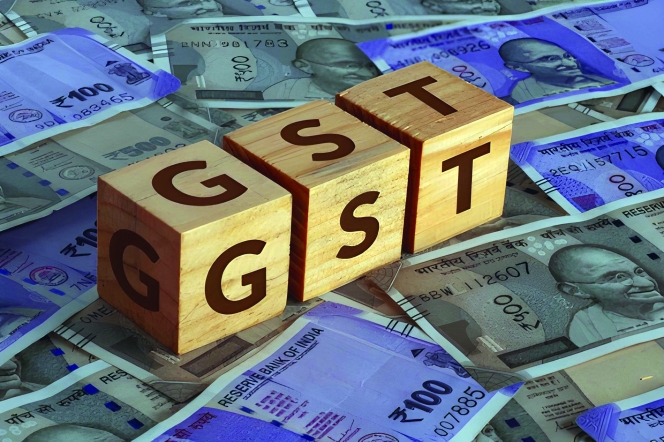
The rollout of GST 2.0 marks a defining moment in India’s economic journey – a reform that may well prove even more consequential than the original introduction of the Goods and Services Tax. Especially for a sector like tyres, the recent reduction in (GST) on tyres is far more than just a change in numbers. It is a transformative step that touches every wheel turning on India’s roads – from a farmer’s tractor to a trucker’s long-haul trailer and from a commuter’s scooter to a construction vehicle powering the nation’s infrastructure.
For years, tyres were taxed at 28 percent – the highest GST slab, clubbed with luxury and demerit goods. This categorisation never truly reflected the essential role tyres play in our everyday lives. Tyres are not a luxury. They are a fundamental enabler of mobility, supporting the movement of people and goods across cities, towns and villages. By bringing GST rates on tyres down to a more rational level, the government has addressed a long-standing anomaly and set the stage for widespread benefits across the economy.
The most visible impact of this move will be felt on the ground – literally. Lower GST means more affordable tyres for all users. Especially for transporters and fleet operators, tyres account for a significant chunk of vehicle running costs. A reduction in tax translates into lower replacement costs, freeing up working capital and improving operational margins. Farmers, small traders, delivery personnel, service providers, transporters – every segment that relies on mobility will feel this relief.
India has been working hard to bring down logistics costs, which are believed to be about 13–14 percent of GDP – much higher than global benchmarks. Tyres have a direct bearing on vehicle operating efficiency, fuel consumption and maintenance schedules. When tyres become more affordable, operators can replace tyres on time, and run vehicles more efficiently.
This naturally leads to lower logistics costs. Reduced logistics costs ripple across the value chain, helping industries move goods faster and at lower cost. This aligns perfectly with India’s ambition to become a more globally competitive manufacturing and trading hub.
Tyre industry’s story is not just urban – it’s deeply rural as well. Tractor tyres, power tiller tyres and tyres for animal-drawn vehicles are integral to the agricultural economy. A reduction in GST brings meaningful relief to farmers and small cultivators who rely on these tyres for their daily operations. By easing this cost, the government has extended direct support to rural mobility and agricultural productivity – an often underappreciated but critical outcome of this reform.
One of the most powerful yet often overlooked impacts of this decision lies in road safety. Worn-out tyres are a major cause of road accidents, particularly on highways. High replacement costs often lead to tyres being used well past their safe life.
With lower GST making new tyres more accessible, both individual motorists and commercial fleet owners are more likely to replace tyres on time, keeping vehicles safer and reducing accident risks. This complements the government’s broader road safety agenda, making highways not just faster but safer for everyone.
For the Indian tyre industry, which is one of the largest in the world, this reform is a game changer. It creates a more balanced tax structure, supports better cash flow, improves compliance and strengthens the competitiveness of domestic manufacturers. It will also encourage investment and capacity expansion, enabling the industry to serve growing domestic demand and tap export opportunities more effectively.
The GST reduction on tyres is a strategic, forward-looking policy decision that will benefit the entire mobility ecosystem. It acknowledges the essential role tyres play – not just as a product, but as a critical enabler of transportation, logistics, rural livelihoods and road safety.
As this reform takes root, its positive impact will be felt by consumers, businesses, farmers and industries alike. The tyre industry, represented by ATMA, welcomes this move wholeheartedly and remains committed to working alongside the government to strengthen India’s journey towards affordable, efficient and safe mobility for all.
The author is Director General of the New Delhi-based tyre industry association, Automotive Tyre Manufacturers’ Association (ATMA).The views expressed here are personal.
WACKER Secures Gold Medal In EcoVadis Sustainability Rating
- By TT News
- December 18, 2025
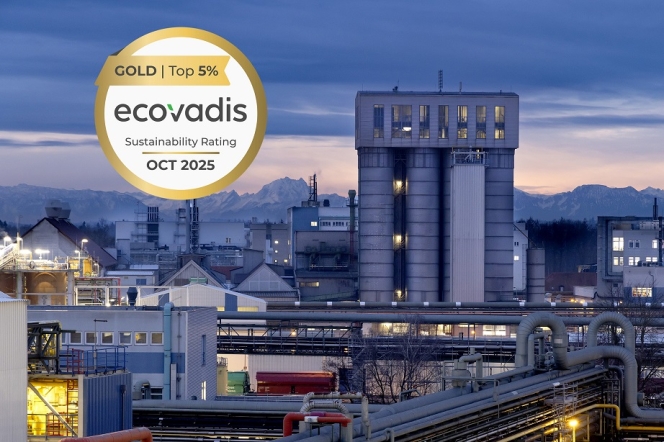
WACKER has earned the 2025 Gold Medal from the independent rating agency EcoVadis, marking its continued recognition for sustainable practices and responsible corporate governance. This distinction places the company within the top five percent of all businesses assessed by EcoVadis (over 1,000 companies globally). WACKER's overall score improved from 77 points (in 2024) to 79 points, driven largely by enhanced reporting and concrete actions focused on Scope 3 emissions and ethical standards.
The EcoVadis assessment measures the quality of a company’s sustainability management through a methodology grounded in international frameworks like the Global Reporting Initiative, the UN Global Compact and ISO 26000. Performance is scored from 0 to 100 across four core areas: environment, labour and human rights, ethics and sustainable procurement, using 21 specific indicators.
In line with its commitment, WACKER provides its EcoVadis evaluation to customers as a standardised and credible validation of its sustainability efforts. The company has also defined ambitious climate targets, aiming to halve its absolute greenhouse gas emissions by 2030 relative to 2020 levels. Progress is already evident, with a 30 percent reduction achieved as of 2024. Looking further ahead, WACKER strives to reach net-zero emissions across its operations by the year 2045.
Peter Gigler, Head of Corporate ESG, WACKER, said, “The result confirms our initiatives in many key areas. It provides our customers with invaluable proof.”
Craig Borman Appointed As Head Of OTR At BKT USA
- By TT News
- December 18, 2025
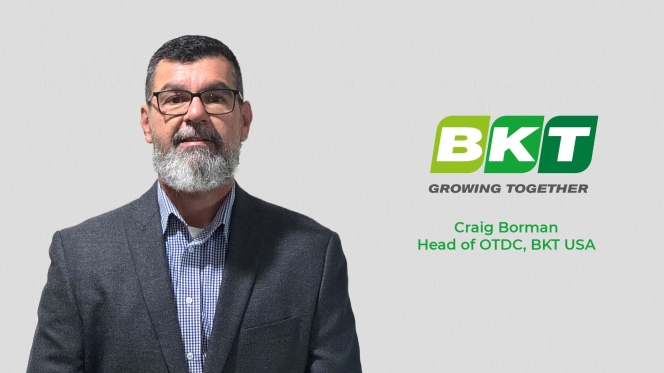
Balkrishna Industries Ltd (BKT Tires), a global leader in off-highway tyre manufacturing, has appointed Craig Borman as Head of OTR at BKT USA. The appointment is in line with BKT’s long-term strategy through 2030.
Borman brings with him 20 years of experience across off-road equipment, tyres and rubber tracks. He will play a key role in leading BKT USA's OTR team and expanding the company's presence in this market while increasing awareness of the value and dependability of BKT's range of products.
Borman said, “I’m extremely excited to join the BKT family and to build off the successes that this team has already achieved. I look forward to engaging with our partners, determining how we can accelerate our mutual growth and working towards achieving BKT’s vision of being a recognised leader in the OTR segment.”
Christian Kötz To Succeed Nikolai Setzer As Continental CEO In Planned Handover
- By TT News
- December 18, 2025
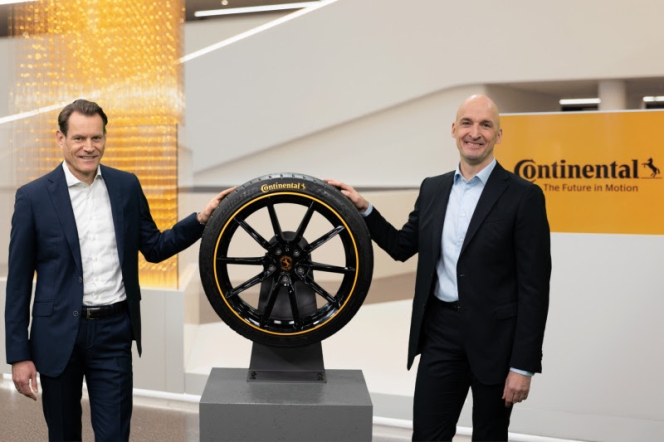
The Supervisory Board of Continental AG confirmed a significant leadership transition during its meeting on 17 December 2025. Christian Kötz will be appointed as the new Chairman of the Executive Board and Chief Executive Officer, effective 1 January 2026. He succeeds Nikolai Setzer, who will step down from the Executive Board on 31 December 2025. Setzer's departure follows more than 16 years as a board member, including the last five years in the CEO role, and occurs by mutual agreement as the company reaches a pivotal point in its strategic evolution.
This planned change in leadership aligns with the substantial progress Continental has made in its transformation into a pure-play tyre company. Major structural milestones have been achieved, including the spin-off of Aumovio and the signing of an agreement to sell the Original Equipment Solutions (OESL) business area. Regarding the planned 2026 sale of ContiTech, internal preparations are largely complete. The market outreach phase has concluded, and a structured sales process is scheduled to begin in January 2026, setting the stage for the final step in the corporate realignment.
Kötz’s extensive background within the tyre business, dating back to 1996, positions him to lead this final phase. A member of the Executive Board since 2019, his previous leadership roles within the Tires group sector included responsibility for the passenger car tyre replacement business in the EMEA region, the original equipment and commercial vehicle tyre business units and global research and development for passenger car tyres. His many years of trusted collaboration with Nikolai Setzer are expected to ensure continuity during the transition.
Kötz will lead an Executive Board comprising several key figures. Alongside him and Philip Nelles, who has headed the ContiTech group sector since 2021, are Roland Welzbacher and Ulrike Hintze. Welzbacher joined the board in August 2025 and assumed the role of Chief Financial Officer on 1 October 2025. Hintze was appointed to the board on 1 July 2025, serving as Chief Human Resources Officer and Director of Labour Relations. This board will be responsible for driving the tyre business forward, completing the corporate realignment and, following the sale of ContiTech, integrating the remaining group functions into the tyre organisation.
Wolfgang Reitzle, Chairman of Continental’s Supervisory Board, said, “Nikolai Setzer has been instrumental in shaping Continental, realigning the organisation and paving the way for three strong, independent companies. For this, he has the thanks of the entire Supervisory Board as well as my personal gratitude. With this handover, we are consolidating responsibility for the tyre business, the realignment and the remaining tasks of the group functions in one role. Christian Kötz is one of the most distinguished managers in the global tyre industry. With his extensive experience and passion for Continental, we firmly believe he is the right choice to lead the company successfully into the future.”
Setzer said, “In recent years, we have succeeded in transforming a diverse portfolio of businesses into three strong, independent champions. After 28 years at Continental, now is the right time for me to hand over responsibility to Christian Kötz. I’m extremely grateful for the journey we’ve all shared and proud of what we’ve all achieved together. I firmly believe that the tyre business, ContiTech, Aumovio and OESL have a promising future ahead.”
Kötz said, “I would like to thank the Supervisory Board for its trust and am excited about this new responsibility. Continental has been my professional home for three decades. Together with the Executive Board team and all colleagues throughout the company, we will complete the realignment and continue the success story of our tyre business.”







Comments (0)
ADD COMMENT